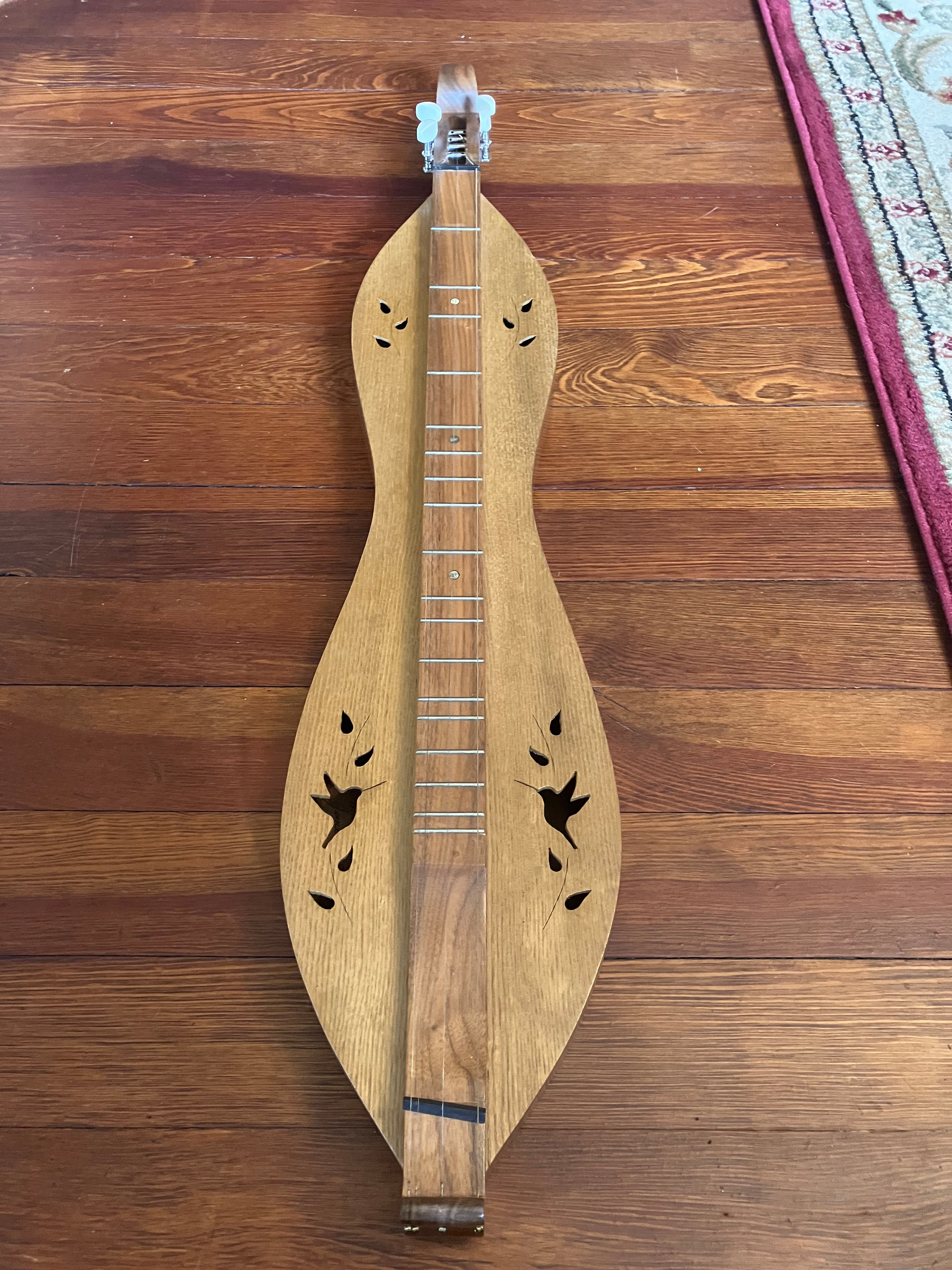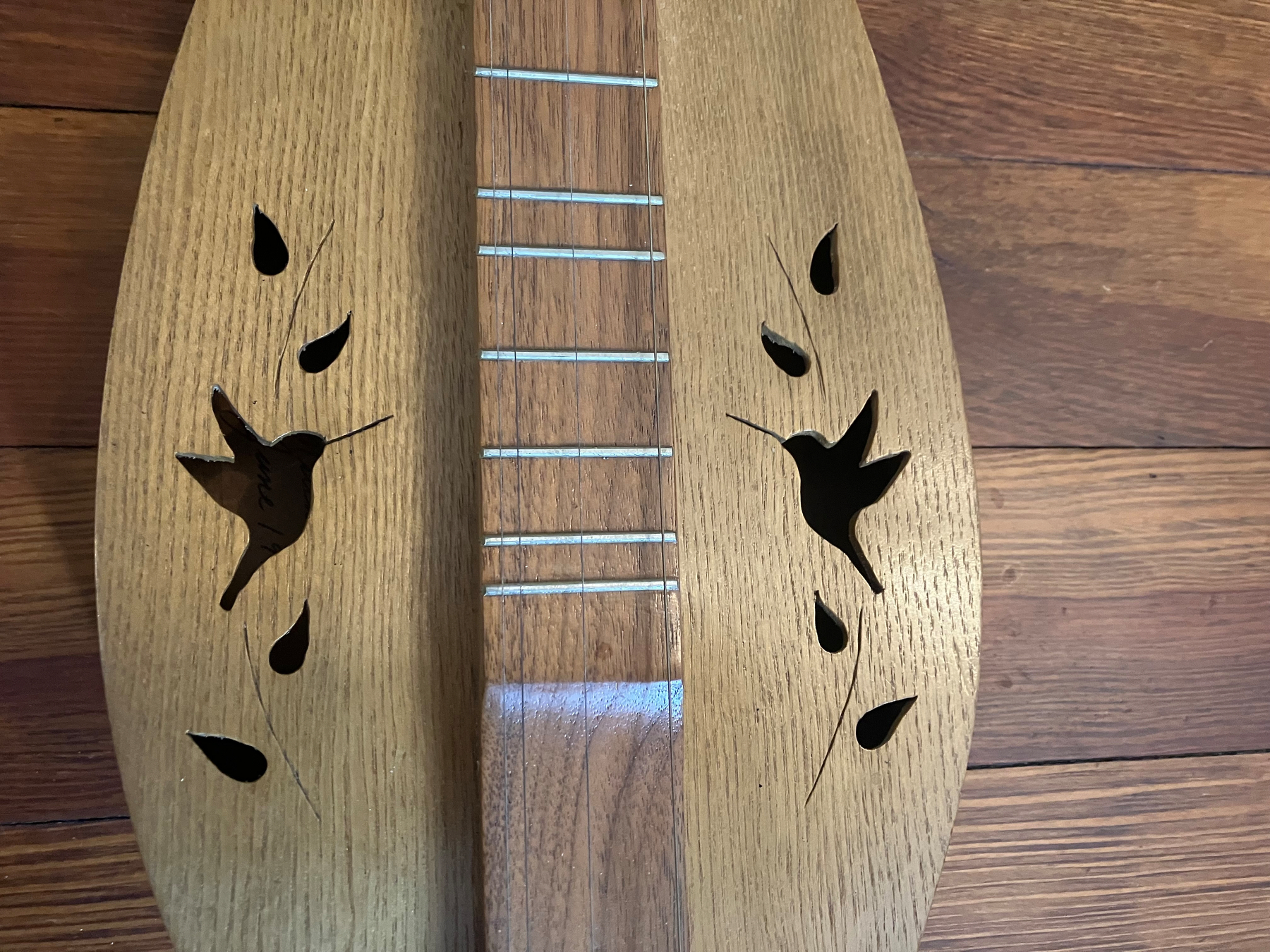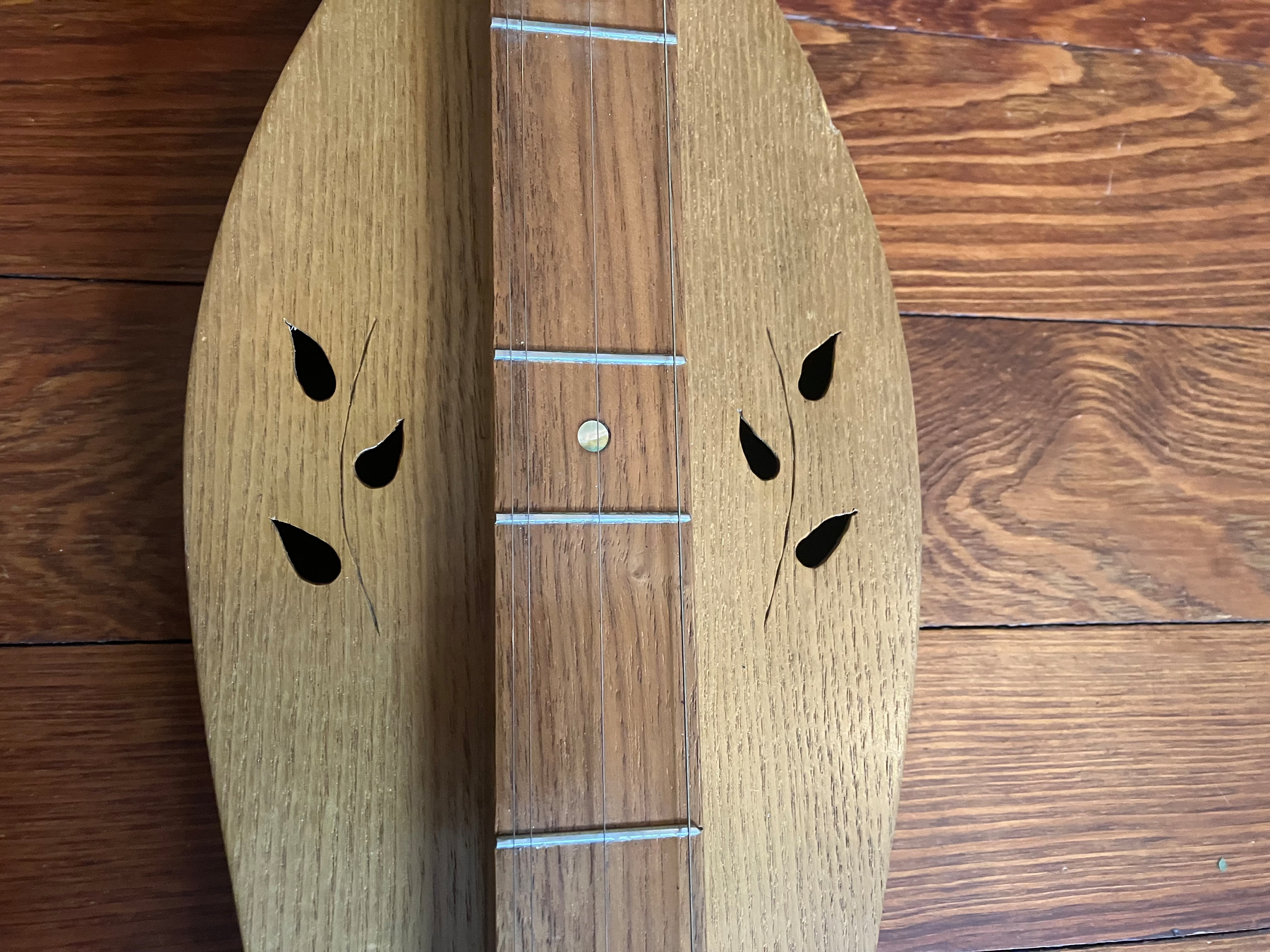FYI: The nightly blessing is defusing the lock anxiety.
Hoosier hysteria
Here in the heart of IU country, it would be hard to overstate the excitement about the football championship game on Monday. It’s been building all season. I am perpetually uninterested in sports, but even I started watching as they neared the end of the regular season undefeated. For those who don’t know: Indiana University has traditionally been a basketball and soccer school. As of two years ago, they had the highest number of losses for any Division 1 football team in history.
I deleted a quick, frivolous post this morning when I realized why it bugged me after posting it: it was another example of the tedious irony that is the lingua franca of social media. Like “gotcha” political argumentation, it’s laziness that mistakes itself for cleverness.
Rachel has inherited a dulcimer made by a local musician named Jim Fox, who has made many over the years and is still alive. One of my friends knows him and owns a few of these dulcimers himself. I may turn this into a bit of a research project.





No Sunday Sales
This morning I read a section in The Amish Way discussing the prohibition of business on Sunday and it reminded me of a similar practice in the Holiness churches I grew up in. The Holiness people lived by a strict set of behavioral and clothing rules they called the holiness standards. Not Amish-level strict, but they made folks noticeable. These were (nearly) universal and violation of the standards was considered sin.
Byung-Chul Han on digital self-surveillance and passivity
Byung-Chul Han is very quotable. From Psycho-Politics: Jeremy Bentham’s panopticon isolated inmates from each other for disciplinary purposes and prevented them from interacting. In contrast, the occupants of today’s digital panopticon actively communicate with each other and willingly expose themselves. That is, they collaborate in the digital panopticon’s operations. Digital control society makes intensive use of freedom. This can only occur thanks to voluntary self-illumination and self-exposure (Selbstausleuchtung und Selbstentblößung).
Good news: the vet confirmed that Ralph has already been spayed. (Yes, her name is Ralph.) Further news: the garage cat has become a basement cat. Every day Rachel opens a ground level window to let Ralph come and go at will, and then shuts her in at night. She isn’t allowed upstairs (yet).
A couple of changes to my work routine this week:
- I’ve started walking to work every day. Just short of fifteen minutes one way, so I can get in almost an hour of walking per day.
- I start working two days a week from home, beginning Thursday.
I’m very thankful to be in a job that allows for this.
After @ReaderJohn linked this excellent piece by Teddy Macker, I went in search for more. This on Walt Whitman and the problem of American politics is challenging and hopeful. Maybe impossible. As Fox Mulder would say, I want to believe.
Update on my Anabaptist reading
Currently reading: The Amish Way by Kraybill, Nolt, Weaver-Zercher Finished reading: Against the Wind: Eberhard Arnold and the Bruderhof by Markus Baum. Engaging biography. Will be reading more about the Bruderhof. Becoming Anabaptist by J. Denny Weaver. Focused on the Reformation era. Historical books often lose my interest (my fault, not theirs) but this one did not. Future plans: More by Kraybill The Politics of Jesus by John Howard Yoder.